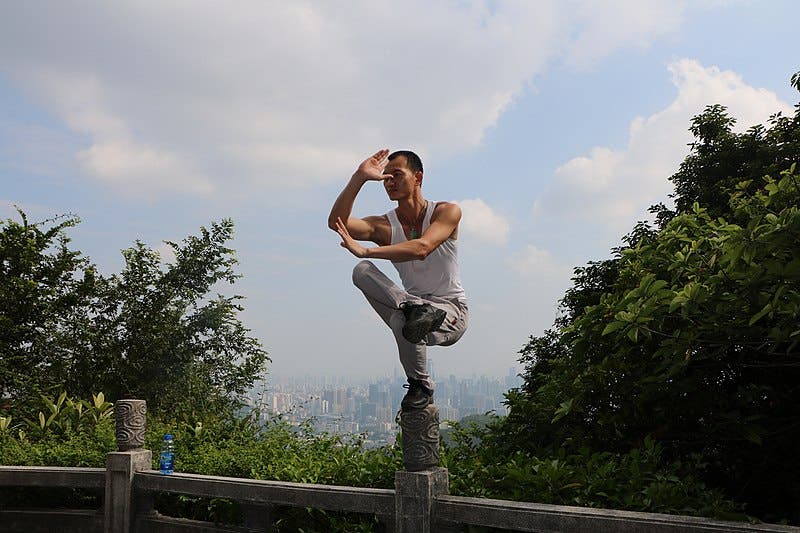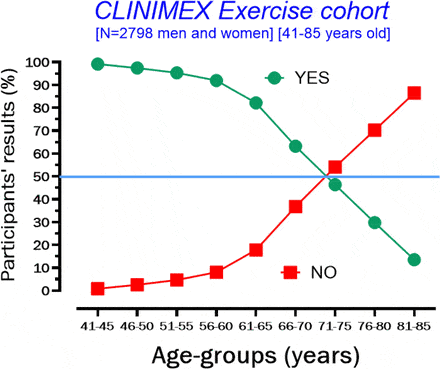
Human balance, or lack thereof, can be a reliable proxy that reflects a person’s health and potential underlying conditions. Recent research on more than 1,700 middle-aged and older subjects found that those who couldn’t balance on one leg for 10 seconds had a much higher death rate than those who could.
Similar to how a police officer might ask you to step out of the vehicle and perform a balancing task to see if you’re intoxicated, this simple 10-second balance test could be employed by doctors as a quick pre-screening, before performing more in-depth investigations for a diagnosis.
“The 10 second balance test provides rapid and objective feedback for the patient and health professionals regarding static balance and that the test adds useful information regarding mortality risk in middle-aged and older men and women,” said lead author Dr. Claudio Gil Araujo from the Clinimex exercise medicine clinic in Rio de Janeiro.
As we age, the body starts to gradually deteriorate. We can’t keep weight off as easily into our forties, our bones become more brittle due to less calcium absorbed from food, the muscles lose mass and become weaker, and our senses, such as sight and hearing, begin to deteriorate. But research suggests that balance tends to be reasonably well preserved until the sixth decade of life.
From age 60, our balance starts deteriorating rapidly too. However, if you’re in your forties and you have difficulties balancing on one leg, that may be cause for concern.
Many doctors have observed the link between poor balance and signs of bad health, yet balance is not routinely screened because there isn’t any standardized test for it. In order to investigate whether a balance test could be a reliable indicator of the risk of death or disease, Araujo and colleagues at Clinimex and the University of Bristol in the UK assessed 1,702 participants aged 51-75, with an average age of 61, between February 2009 and December 2020. Each participant supplied details of their medical history, along with measurements of their weight and waist size.
During their initial checkup, the participants had to stand on one leg for 10 seconds. They were asked to perform this task while placing the front of the free foot and the back of the opposite lower leg while keeping the arms by their sides and their gaze fixed straight ahead, as shown in the picture below. Each participant was allowed three attempts on either foot.

One in five participants failed the test, most of whom were over age 60. This rate of this inability doubled at every 5-year interval roughly from age 50 onwards. Nearly 5% of 51 to 55-year-olds couldn’t balance on one foot, while this figure jumped to 37% among 66 to 70-year-olds. And more than half of those aged 71-75 couldn’t complete the test.

During a follow-up that was performed 7 years, on average, after the initial assessment, the researchers found 123 participants had died due to cancer (32%), cardiovascular disease (30%), respiratory disease (9%), and COVID-19 (7%).
But when they dived deeper into the results, the researchers noticed a disturbing trend. Around 17.5% of those who failed the balancing test died versus 4.5% who passed the test.
Those who failed the 10-second one-leg balancing test tended to be more likely to be obese, have heart disease, higher blood pressure, and an unhealthy blood fat profile compared to those who passed the test. Type 2 diabetes was three times more common in the group that couldn’t balance.
After accounting for possible confounding factors, such as age, sex, and underlying conditions, the researchers concluded that the inability to balance on one leg for a brief period of time was associated with a stunning 85% heightened risk of death from any cause within the next decade.
The one-legged stance test has been used by some doctors to assess balance for the past five decades, the researchers note, but it has never been routinely employed to assess health. But now that we have data that link balancing to mortality, this test could become more routine, along with other simple and quick tests, such as the step test.
“The current findings suggest the 10-second one-legged stance is a potential practical tool that could be used in routine clinical practice to identify middle-aged and older individuals at high risk of death. We encourage researchers with access to these data to publish their findings to confirm these results,” said co-author Dr. Setor Kunutsor, Senior Lecturer in Evidence Synthesis in the Bristol Medical School: Translational Health Sciences (THS).
The findings appeared in the British Journal of Sports Medicine.



